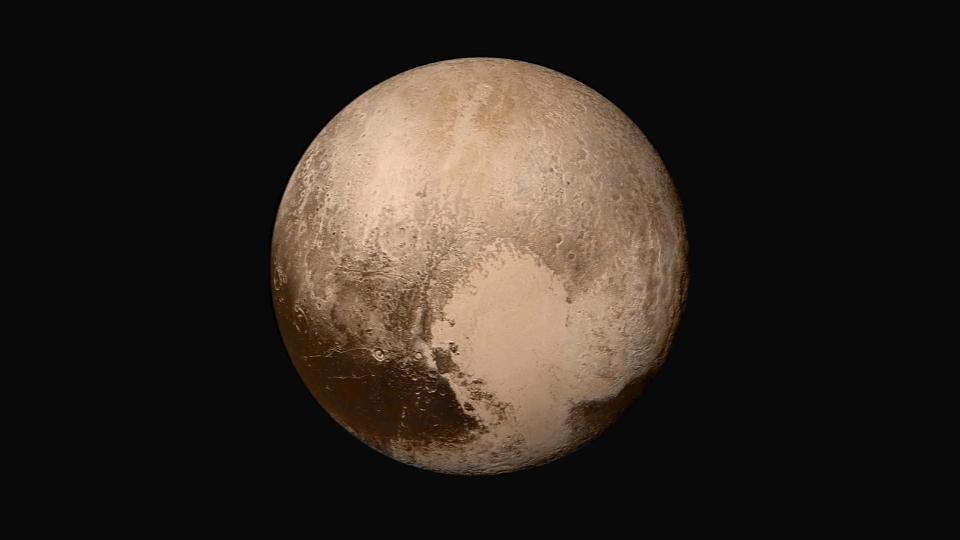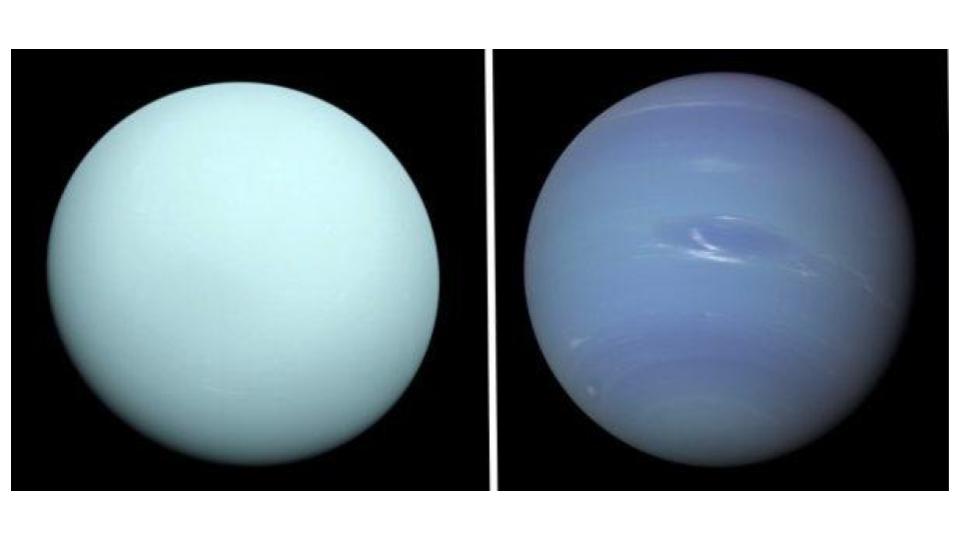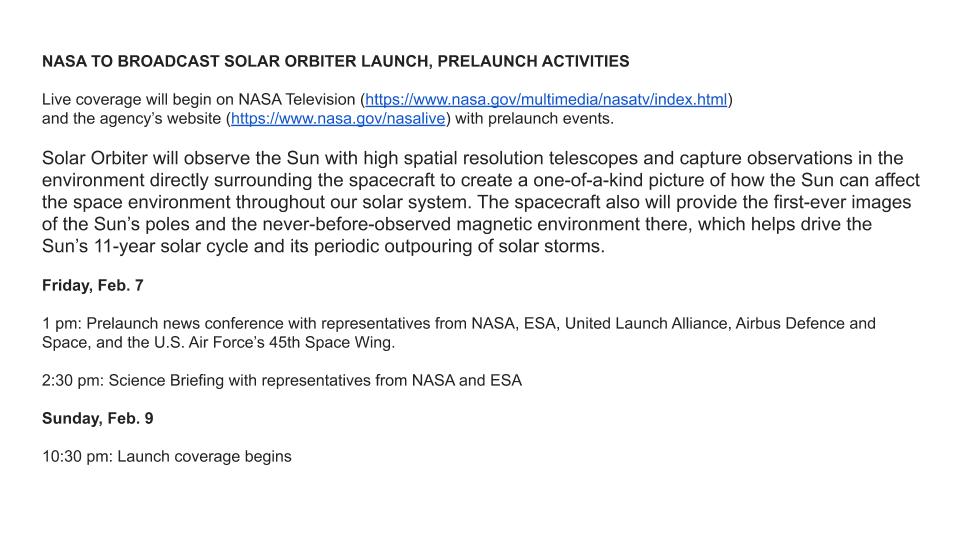Today’s news is all about the weather: We look at what drives Pluto’s counter flowing winds, why Neptune is so much stormier then Uranus, and how NASA and ESA are getting us ready for their space weather watching mission Solar Orbiter

Credit: NASA/Johns Hopkins University Applied Physics Laboratory/Southwest Research Institute.
This week a blast of cold air is slowly moving across North America, reminding us that winter is still here for a few more weeks. These window rattling gusts are driven by thermodynamics, with air of different temperatures having different pressures. Here on Earth, understanding our weather is an exceedingly difficult process because we have to take into account the effects of mountains, the heat of cities, and even the ability of oceans and even rain soaked fields to give up their water to the air. Put differently, everything that can affect the temperature, humidity or flow of air across the land affects our weather. To those of us experiencing rain and snow, it’s the role of water in the weather that often matters most.
As we look out across the solar system, we see that different elements play different roles in the atmospheres of different worlds. As we’ve talked about before, Methane plays the role of water on Titan. Now we learn that on small distant Pluto, Nitrogen is the big player. Due to lack of atmospheric pressure, we only see Nitrogen in two phases: solid and gas. When we look at Pluto and see its massive heart. Named Sputnik Regio, this heart is a plane of Nitrogen Ice. Sputnik Planitia in particular – that left lobe of the heart – is a 1000 km across, 3 km deep basin fairly smooth of nitrogen ice. As Pluto rotates from day to night, nitrogen in the Northern part of the heart sublimates into the atmosphere and travels west – against the rotation of the world – before freezing back into the southern part of the heart. Since the wind is driven by the heating of the heart, it pulses – beats – over time as it rhythmically drives this unique wind patterns.
These new results show us that while the physics that work here, work everywhere, the outcomes of that physics can be remarkably different on other worlds.

- Why Uranus and Neptune are different (Planet S)
From Pluto, we now move to Neptune and Uranus, the two ice giants in the outer solar system. Uranus is a pale baby blue or turquoise planet that often appears completely featureless, but does have occasional storms in its atmosphere. Neptune is more of a crayola blue world with constant storms of various size dynamics. These two worlds are similarly-sized, and not very different in temperature, so the question has always been – why do these two worlds look so strikingly different? In new research coming to us from University of Zurich, we learn that differences in their collisional history – collisions that bulked up their masses and determined their rotational axis – led to the observed differences in atmospheres. New computer simulations are showing that Uranus mostly likely experienced a collision where the two centers were far apart. I’d call this a glancing blow, but the two objects ended up as one object! In this scenario, the impact had a massive effect on the world’s rotation. This is how we got Uranus tilted all the way on its side. This also lead to the material of the impactor wrapping around the outside of Uranus, leaving Uranus’ interior untouched. This kind of a collision also explains Uranus’ faint, thin rings.
Neptune, on the other hand, had more of a head-on collision. This mixed the materials of the proto-Neptune and it’s impactor much more completely, and allowed Neptune to continue having it’s more normal rotation. This violent collision also churned up heat that continues to drive the weather we observe. Neptune was left with a stormy surface, no rings, and no natural moons.
I guess, bland Uranus deserves all the rings and moons it can find to wear, but this kind of science makes Neptune an even more exciting potential target for future exploration.

While we have no current missions planned to Neptune, this week NASA and ESA are hoping to launch a new mission.
The Solar Orbiter is currently scheduled to launch late in the night between Sunday and Monday. Launch is scheduled for 11 pm Boston time, with live coverage starting 30 minutes earlier. This mission is getting a lot of hype from NASA and ESA, and they will be bringing us a prelaunch news conference Friday at 1 pm Eastern and a science briefing at 2:30 pm Eastern We will do our best to bring you coverage of these events live on Twitch.tv. As always, launches go when they want to go, and there may be delays. Follow us on Twitter and we’ll work to keep you up to date on everything that’s going on.
<———————>
And that rounds out our show for today.
Thank you all for listening. The Daily Space is written by Pamela Gay, produced by Susie Murph, and is a product of the Planetary Science Institute, a 501(c)3 non profit dedicated to exploring our Solar System and beyond. We are here thanks to the generous contributions of people like you. Want to become a supporter of the show? Check us out at Patreon.com/cosmoquestx


 We record most shows live, on Twitch. Follow us today to get alerts when we go live.
We record most shows live, on Twitch. Follow us today to get alerts when we go live.